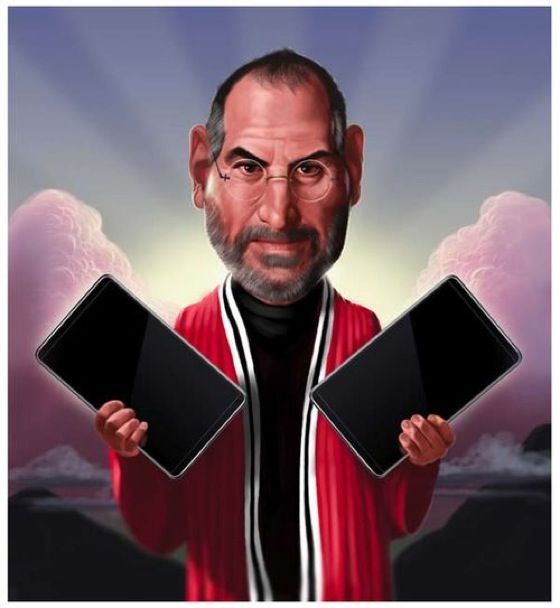Over the course of one year, 15 million consumers bit the hook and forked over the cash in exchange for Apple’s iPad. It’s the newest hard drug. It makes the people who use it happy. Seeing your friends use it makes you want to use it. People don’t want or need to pay all the money it costs but they do anyway. Hoards anxiously await its newest release and distribution.
The recent global debut of the iPad 2 was greeted with the open arms of massive crowds to which Steve Jobs is accustomed. It seems not too long ago that people doubted the functionality of the tablet, that no one would need such a thing. While it is true that nobody needs an iPad like they need food and water, the iPad has shown that almost everyone has a need for one.
The tablet is an interesting piece of technology that exists between a laptop computer and a smartphone. Laptops are getting thinner and lighter, and smartphones allow you to play your music, pay your bills, and everything in between. Why would anyone need a tablet?
The tablet market was nonexistent and its future looked grim. Then, people started actually using the iPad.
Succeeding the conventional oven, the microwave oven could heat food faster and use less energy. Even though it wasn't as good at cooking as an oven, and it wasn't obvious why anyone would want a microwave, the microwave became a staple in practically every home, because people kept finding new ways to use this technological wonder.
Just like the microwave, the iPad’s functions are essentially limitless. This is made possible with the support of Apple and hundreds of thousands of downloadable applications, or apps.
Watching movies and playing games are probably the two most popular functions of the iPad. Beyond entertainment, however, it offers a variety of productivity applications full-size calendars and maps at your fingertips. It even offers the adaptation of a Windows environment for more compatibility with enterprise functions.
Improving on its performance and design, there is no mystery or surprise as to why the crowds started forming outside the Apple store at an ungodly early hour. Those who had the first-generation product wanted an upgrade. Those who did not own one, wanted to.
With all this excitement regarding the recent iPad 2 release, it is needless to say that the tablet has found its place in our technology market. For now, that market belongs to Apple. No competitor has created a tablet that has nearly as much buzz and popularity among the masses.
Jotting down notes, playing Angry Birds, watching movies, reading a book, sending email, outlining a presentation, perusing the newspaper, social networking. Few of us can honestly claim we do none of those things. The iPad rolls combines all those tasks, and more, into a single, 8.8 millimeter-thin package.
Its wide array of capabilities makes the iPad a common bond between children and seniors, teenagers and adults, students and teachers. The one division the iPad creates is between the haves and the have-nots. Which one are you?

This comment has been removed by the author.
ReplyDeletePersonally, I am a have not. I understand that tablet personal computers boast simplicity, touch screen accessibility, and compact “take-everywhere” sizes that desktop and laptop computers cannot compete with, yet they lack many features. Not only are they relatively cumbersome in terms of completing functions that a regular computer can perform, but you are also paying additional money for capabilities that most current-day smart phones already possess. I have an iPhone and see little difference between what a tablet computer can do in terms of outperforming my phone other than having a large screen and faster processor.
ReplyDeleteI am confused by the support for tablet computers, as they are relatively incapable of utilizing common computer applications such as Microsoft Excel and Adobe Photoshop. I can see them as useful for older generations in terms of learning how to operate computers on a simplistic nature, but other than that, they are oversized smart phones that cannot make calls.
I am sure that the technology will continue to improve for tablet computers in the future, but for now and the next couple of years I see very little motivation in purchasing a tablet computer in comparison to a smart phone or desktop.
When the iPad came out, I thought it was the biggest waste of a product Apple had made since Jobs retook the helm of the company in the late 90's, but I knew that it would still sell extremely well. Like you mentioned in your post, an iPad is not a necessity for anybody. If you have a laptop or a smartphone, than you really do not NEED an iPad. It is more of a convenience however. It is easier to read the newspaper on an iPad when eating breakfast than it is on a small phone or a more bulky laptop, for example.
ReplyDeleteI think that while tablets seemed to be limited with their use as of now, it is only a matter of time until they replace laptop computers that will have tremendous ability. Apple has been leading the way with the tablet market, but many companies are close behind and have built effective tablet alternatives in what looks like may be a competition similar to Microsoft and Apple of the 80's and 90's.
Either way, I see why people enjoy their iPads or other tablets but I cannot justify having one as of now. I simply do not have a distinct need for one.